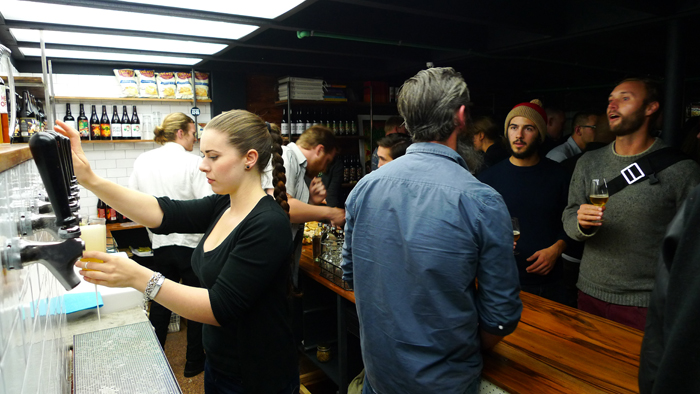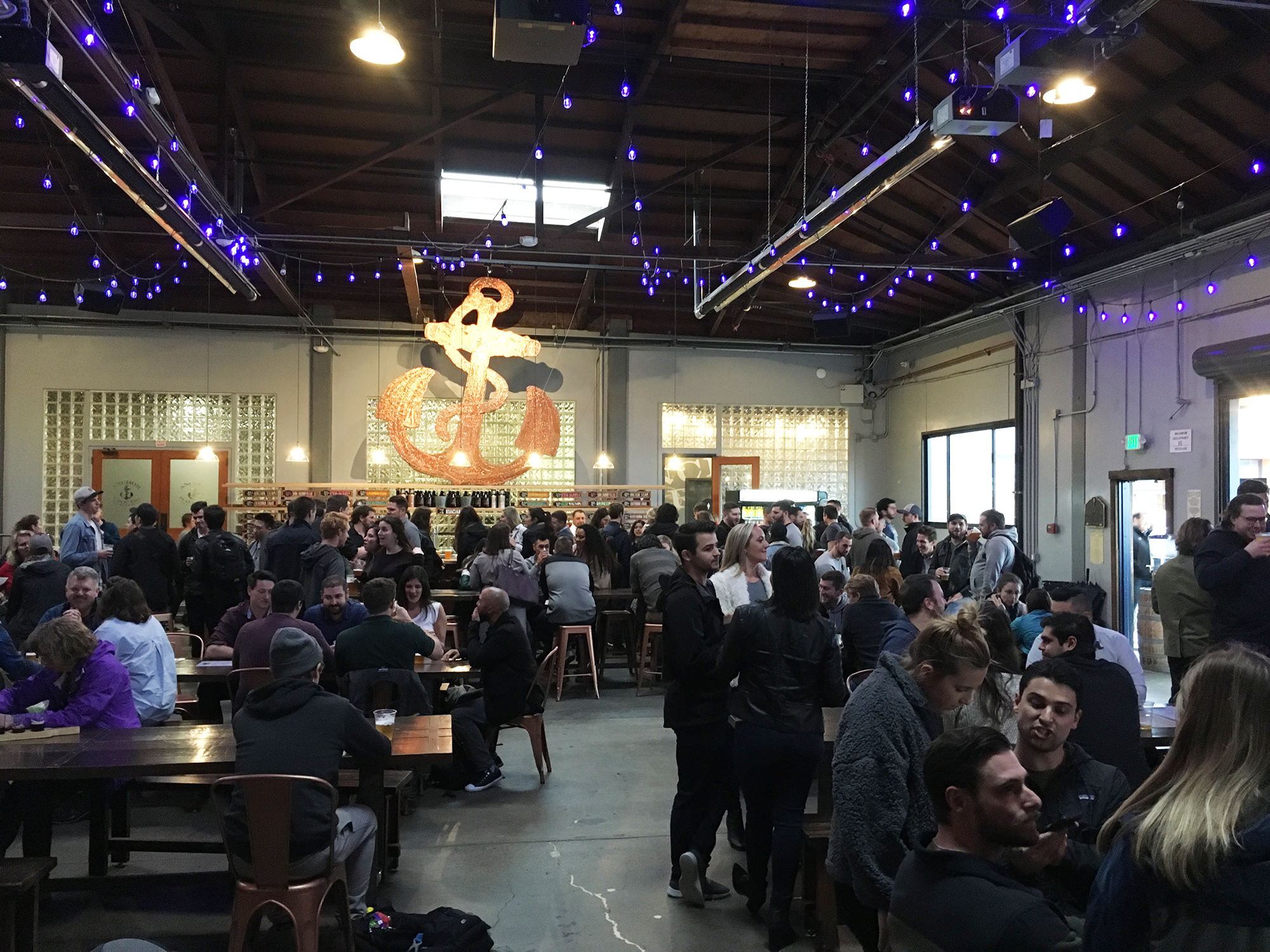If a tree falls in the forest does it make a sound? If a butterfly flaps its wings in Europe, does it cause a typhoon in Japan? If a brewer in Japan makes a sake-infused milkshake IPA with yuzu and glitter, does the collective gasp of excitement by beer geeks around the world cause a black hole to open, swallowing us all? Everything is interconnected and information travels fast in this increasingly borderless world of ours. Let’s take a look at what’s been happening with beer these last three months.
Which country in the world has the most breweries per capita? Germany, Belgium, the Czech Republic, England and the United States of course have robust beer cultures and lots of breweries–the U.S. has well over 7000–but this accolade goes to New Zealand. Although the country has slightly more than 200 breweries (about half of Japan’s count), its population is less than five million (compared to Japan’s 126 million). The New Zealand Craft Brewers Association recently highlighted this as a way to draw attention to its industry. More to the point, New Zealand’s breweries are, in general, rather good. Garage Project (featured in JBT#23) is internationally lauded for its creative beers. In Japan, some New Zealand imports are available through Montsabre Inc. Try a few or, even better, visit some of the breweries yourself.
There are no beer airlines traveling out of Japan (yet), but don’t discount that possibility some day. BrewDog in the UK, known for its clever (and sometimes controversial) marketing tactics, launched BrewDog Airlines in February. The company chartered a flight that took 200 beer-loving passengers from London to Columbus, Ohio (home to its U.S. facility). Founders James Watt and Martin Dickie gave the safety announcements. Once the flight reached cruising altitude, passengers participated in a beer tasting, led by Cicerone-qualified flight attendants. Even the meals were designed to pair with beer. The only problem in need of a future solution: apparently the toilets began to fill up before the flight finished (to be fair, we had a similar problem years ago when we ran an all-you-can-drink beer cruise in Yokohama).
This past February, notable author and beer journalist Stephen Beaumont launched a campaign called “Flagship February”. Its intent was to reignite consumer interest in the flagship beers of craft breweries, meaning the one representative beer that breweries put forward as the face of their endeavors. While flagships are the backbone of many a brewery’s sales, for many veteran craft breweries in America, flagship sales have been declining. Consumers these days often pursue whatever is new and perhaps neglect the greatness of some of these flagships. So in February, Beaumont and fellow colleagues encouraged drinkers to consume a flagship beer when they went out. We think this is a great idea, but why stop with February? We proposed (via social media) “Flagship Fridays” whereby you make the first beer you drink on a Friday some flagship brand. Of course, that might be difficult if a bar isn’t carrying any flagships! (Bars: please carry flagships)
The Brewers Association in America recently revealed its list of the top 50 craft breweries in America by sales volume. Many commentators like to look at who moved up the most, or who fell out of the listing. But of interest to our readers in Japan, many of these breweries are available in the country. We count close to 20, including 6 of the top ten: Boston Beer Co. (#2), Sierra Nevada Brewing Co. (#3), New Belgium Brewing Co. (#4), Duvel Moortgat (Firestone Walker; #5), CANarchy (Oskar Blues Brewery; #8), and Stone Brewing Co. (#9). Not listed, though their sales could surely rank them, were Lagunitas and Ballast Point (both available in Japan). The reason is that they no longer meet the BA’s definition of craft brewery, having been bought out by large corporations, though most consumers probably still consider them craft-like. A third one in that vein is Anchor Steam (see JBT#28), which is now owned by Sapporo, as many know.
Anchor/Sapporo is currently facing an unusual situation. Its workers have voted to unionize. The basic reason they cite is that they want to bargain for better benefits and a “livable wage”–they want to both work and make enough money to live in San Francisco. Part of the problem is that San Francisco is one of the most expensive places to live in America (not to mention much of the surrounding San Francisco Bay Area). One employee said that if a corporation is going to own Anchor, then they want a voice in how that corporation makes decisions that affect the brewery and its staff. News organizations across America have stated that this is the first time a craft brewery is facing unionization efforts. That’s not entirely the case. As noted above, the Brewers Association does not consider Anchor a craft brewery due to corporate ownership, though this kind of seems like an academic point. They probably meant to say that this was America’s first craft brewery and it is unionizing. Boston Beer Co. has had a unionized force at one of its facilities since 1997. In Chicago, Lagunitas’ production facility is unionized, as is Goose Island’s. We dug up a couple of other craft or craft-like breweries, though these are the imported brands Japanese consumers would know. Sapporo, for its part, has a unionized subsidiary in Canada, so it’s no stranger to this kind of situation. It will be interesting to see how this plays out, especially in the larger context of the craft beer industry.
The craft beer industry in America is notorious for relatively low wages. In fact, the trend of wages over the last decade has been one of decline. Of note, there is a group of brewers and brewery workers in Japan who for years have been similarly advocating for better pay in the face of low wages. In America, at least, some are speculating that the moves at Anchor Brewing Co. could inspire other brewery employees to try to unionize. We shall see. Few have as negotiating partners corporations like Sapporo (which, to its credit, generally appears to have long-range vision).
Let’s use this moment to shift our focus to Japan now. What’s the state of the industry here? Mostly good. Sadly, Chateau Kamiya (JBT#16), which operated Ushiku Brewery, announced earlier this year that it was shutting its beer brewery operations down. Chateau Kamiya is better known by the general public as a sprawling winery, but the beer brewery was celebrated by beer geeks and casual beer drinkers alike. The brewers were knowledgeable, the beer was good and its beer garden seemed popular. Clearly, the business was not doing as well as it seemed; the company cited general decline as its reasons for shuttering the operation. Is this a harbinger of further closings among established craft breweries in Japan?
It’s possible that increased competition is partly to blame. New craft breweries, especially of the brewpub scale, continue to open on a monthly basis throughout Japan. However, a handful of craft breweries in Japan are actually expanding their capacity and production volume with equipment upgrades. Some of these are quite dramatic. A few that we know have expanded in recent months include Y.Market Brewing, Ise Kadoya, Minoh and Yorocco. We hope their sales catch up with their new capacity. If you want to help, visit their taprooms and/or drink a few of their beers. And don’t forget those flagships!
This article was published in Japan Beer Times # () and is among the limited content available online. Order your copy through our online shop or download the digital version from the iTunes store to access the full contents of this issue.





